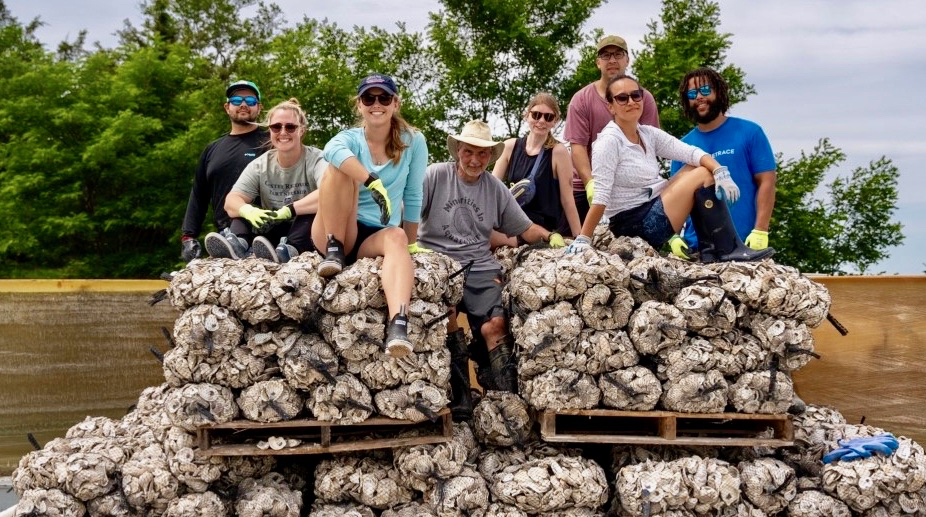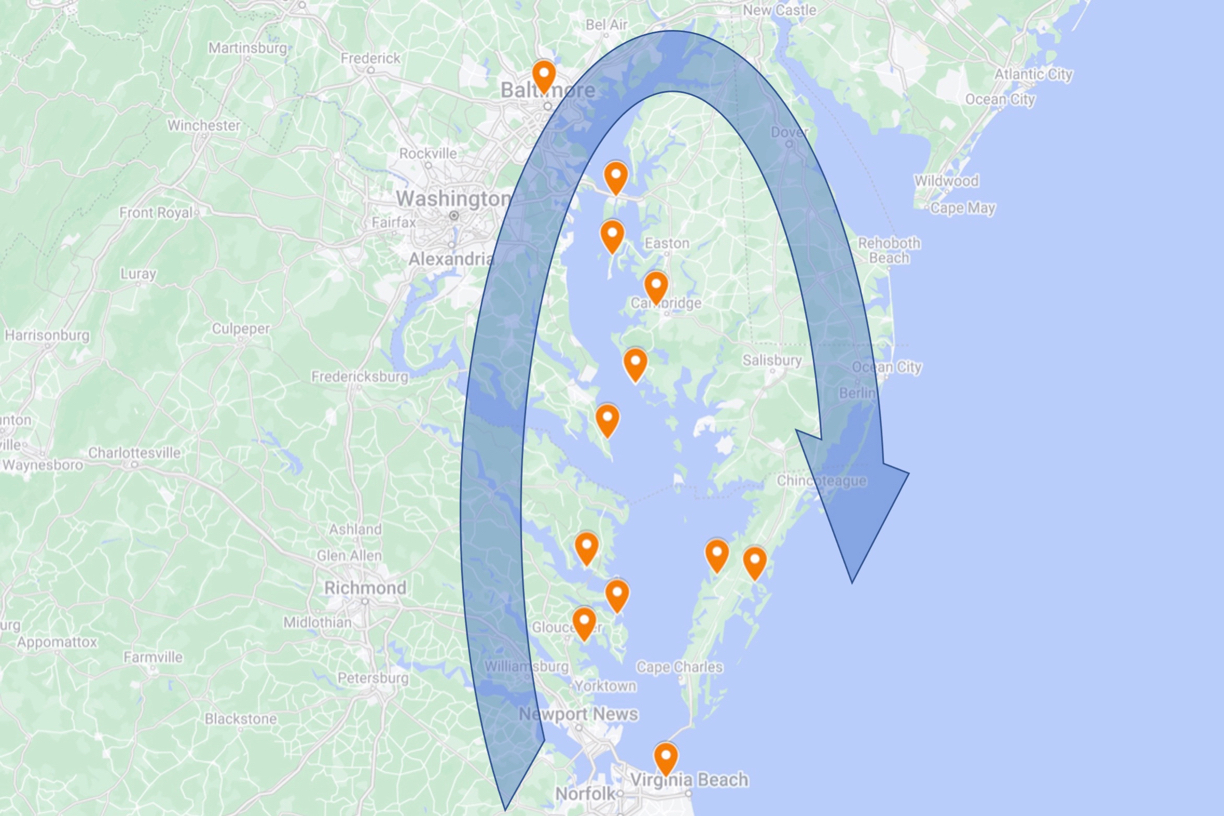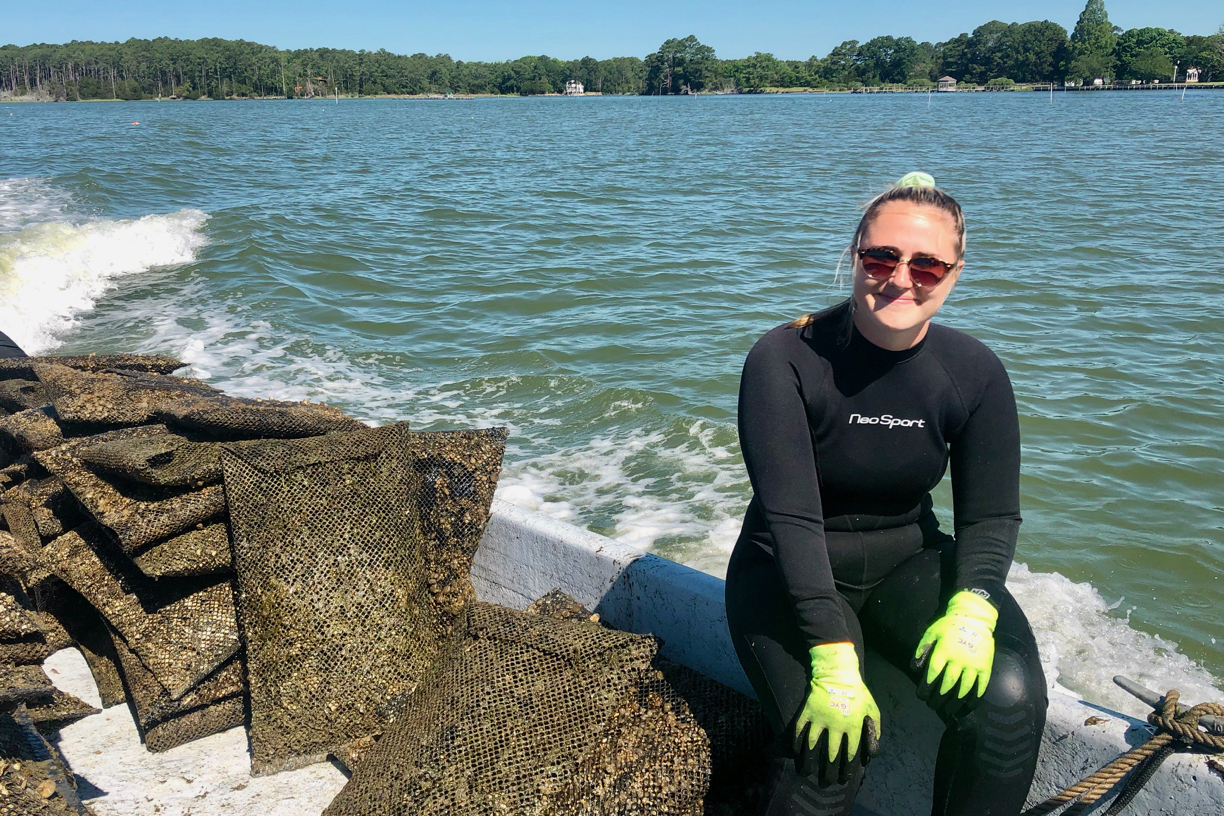New course offers practical experience in shellfish aquaculture
VIMS grad students work with growers all around the Chesapeake
A new course from the Virginia Institute of Marine Science recently gave a group of VIMS graduate students a learning experience that wasn’t just hands-on, but feet-wet and mouth-watering.
Taught by Dr. Bill Walton, Acuff Professor in William & Mary’s School of Marine Science and Shellfish Aquaculture Program Coordinator at VIMS, the eight-day course was built around a circumnavigation of the Virginia and Maryland shorelines of the Chesapeake Bay, with working visits to seven commercial shellfish farms, four hatcheries, a shucking house, and a a raw bar.
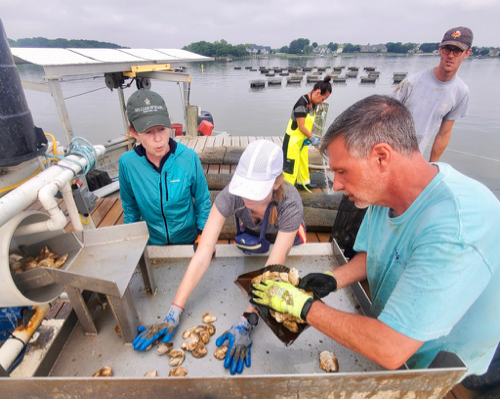 “The goal wasn’t to gain the knowledge needed to become a farmer,” says Walton, “but to give students a realistic and up-close view of what shellfish aquaculture looks like in the Chesapeake so they can better understand the needs of this sustainable industry.”
“The goal wasn’t to gain the knowledge needed to become a farmer,” says Walton, “but to give students a realistic and up-close view of what shellfish aquaculture looks like in the Chesapeake so they can better understand the needs of this sustainable industry.”
Student feedback shows that goal was clearly met. “Working side-by-side with the industry you're trying to help is a great way to learn about the problems that need to be solved,” says VIMS master’s student Matt LaGanke.
LaGanke says his favorite course experience was threefold. “We first worked half-a-day with a grower in the northern Bay. We cleaned baby oysters, sorted them by size, and transferred them from the on-land nursery to the grow-out area on the water. We then stopped at the grower’s Baltimore restaurant, 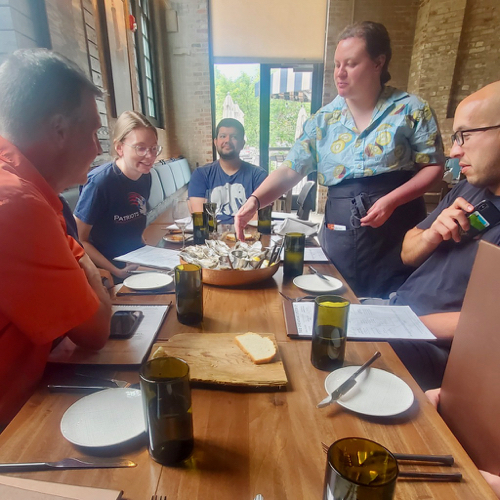 where we briefed the servers to help them better explain the story behind oyster aquaculture and differentiate between varieties. That was followed by a great dinner with an awesome discussion about everyone's ideas from the day.”
where we briefed the servers to help them better explain the story behind oyster aquaculture and differentiate between varieties. That was followed by a great dinner with an awesome discussion about everyone's ideas from the day.”
Another course participant, master’s student Julia Grenn, says she enrolled to “develop an understanding and deeper appreciation for the various farming techniques, husbandry decisions, and business models around the Bay.” She thought “the most eye-opening aspect of this class—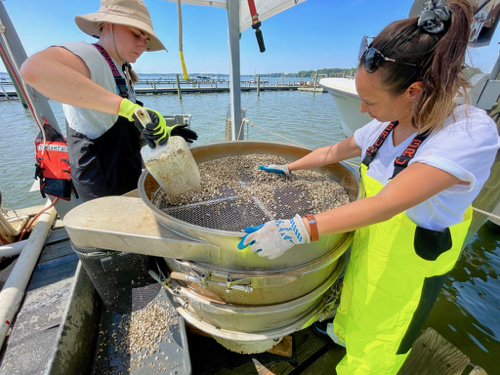 and my favorite part—was visiting farms of different scales and observing how each level operates.”
and my favorite part—was visiting farms of different scales and observing how each level operates.”
“I love that the students jumped in and were all really engaged,” says Walton. “Whether they go into policy or science or industry or education, this course will help them understand what shellfish growers think about and worry about. Course participants will never assume they know everything about aquaculture, but by getting literally immersed in the work, they will have a much better grasp of what's out there.”
Walton notes some students may have initially been surprised by the authenticity of the experience. “Some of the work may have been repetitive, like spending 4 hours at a farm washing cages,” he says. “But to me, it's not just that you're doing activity X—but that you're talking with the growers you're working with.”
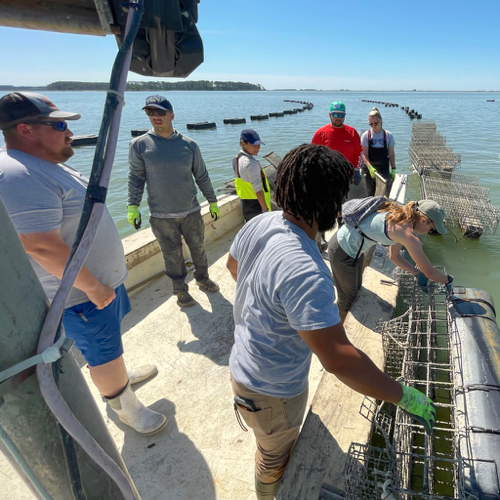 Walton says these in-the-moment, one-on-one dialogues are one of the best parts of the course. “The conversations you have when you're working with folks—when they see you're willing to get wet and dirty—are very different than those you have when you show up in nice clothes and are just looking at things. You get a much more authentic experience when you help lift heavy oyster bags. It gives you a real understanding of what their day is like and the challenges they face. It's a different interaction.”
Walton says these in-the-moment, one-on-one dialogues are one of the best parts of the course. “The conversations you have when you're working with folks—when they see you're willing to get wet and dirty—are very different than those you have when you show up in nice clothes and are just looking at things. You get a much more authentic experience when you help lift heavy oyster bags. It gives you a real understanding of what their day is like and the challenges they face. It's a different interaction.”
Broadening the impact
This fall, Walton and colleagues will kick off a related shellfish aquaculture course that augments visits to growers with more traditional classroom lectures and lab work. Joining Walton as instructors are Dr. Jess Small, research assistant professor and director of VIMS’ Aquaculture Genetics and Breeding Technology Center; Dr. Ryan Carnegie, research professor and head of VIMS’ Shellfish Pathology Laboratory; Dr. Andrew Scheld, associate professor and fisheries economist; and Dr. Lisa Kellogg, a research assistant professor with expertise in shellfish ecology.
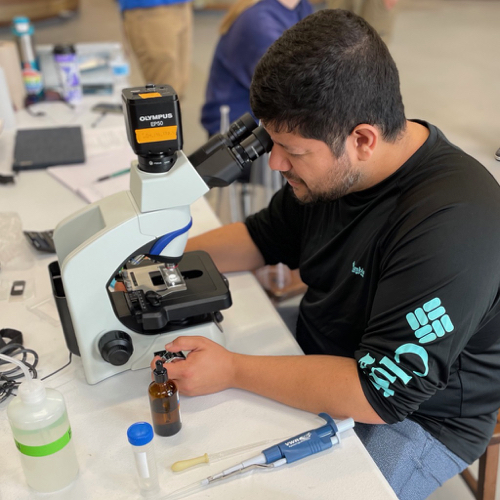 “While the summer course is intended to provide hands-on immersion in commercial shellfish aquaculture, the fall course will add a broader grounding in aquaculture science,” says Walton. A sequential series of two- to three-week modules will introduce students to all aspects of shellfish aquaculture, including shellfish biology and production methods, shellfish health and diseases, shellfish-environment interactions, and the socioeconomic considerations of clam and oyster farming.
“While the summer course is intended to provide hands-on immersion in commercial shellfish aquaculture, the fall course will add a broader grounding in aquaculture science,” says Walton. A sequential series of two- to three-week modules will introduce students to all aspects of shellfish aquaculture, including shellfish biology and production methods, shellfish health and diseases, shellfish-environment interactions, and the socioeconomic considerations of clam and oyster farming.
Although the initial shellfish aquaculture courses are open just to students at William & Mary, the instructors plan to soon make them more broadly available.
“We purposefully broke our fall course into four modules so that in the future, if a student from the University of Washington or Rutgers wants to enroll, they won't have to get free for a full semester,” says Walton. “Instead, they could come for a few weeks just to learn about shellfish pathology with Ryan Carnegie, or just to learn about aquaculture-environmental interactions with Lisa Kellogg. We figured that would be an easier sell with their advisor back at their home institution.”
Ultimately, Walton envisions a similar modular set-up for the 8-day summer course, with independent offerings in specific areas of shellfish farming, whether nursery operations, hatchery work, or field grow-out. He also envisions taking the course on the road to explore the nuances of shellfish aquaculture in different regions.
“The formal name of our summer course is Shellfish Aquaculture in Practice: Chesapeake Bay,” he says. “I put the colon in there so we could swap out what comes after—whether it’s aquaculture in the Chesapeake or the Pacific Northwest or New England. You start talking about this and it’s easy to start dreaming about going not just elsewhere in the U.S. but to Australia, or France. Once we validate our proof-of-concept for the course, the world will truly be our oyster.”


